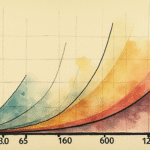Introduction
In Mexico, the gender pay gap persists in various sectors, including healthcare. Despite women making up 51% of the total workforce in this industry, they consistently earn less than their male counterparts across almost all age groups.
The Gender Pay Gap in Healthcare
According to data from the National Occupation and Employment Survey (ENOE) by Mexico’s National Institute of Statistics and Geography (Inegi), as reported on the Data México platform, women constitute 51% of healthcare workers. However, despite being the majority, they still receive lower average salaries compared to men in most age brackets.
The gender pay gap is more pronounced as healthcare professionals grow older. For instance, female doctors, nurses, and other health specialists aged 55 to 64 face a 36% salary gap compared to their male counterparts of the same age group.
Who are these Healthcare Professionals?
These healthcare professionals encompass a wide range of specialists, including doctors, nurses, and other medical experts. Their roles are crucial in delivering healthcare services to the Mexican population, making up half of the workforce in this sector.
The underrepresentation of women in leadership positions within healthcare institutions may contribute to the existing pay gap. This disparity also reflects broader societal issues regarding gender equality in the workforce.
Impact on Women and Healthcare
The gender pay gap in healthcare has significant consequences for women and the quality of care provided. Lower wages can lead to financial instability, affecting their ability to invest in further education or training. This, in turn, may hinder career progression and limit opportunities for advancement within the healthcare sector.
Moreover, the undervaluation of women’s work in healthcare can perpetuate stereotypes and discourage young girls from pursuing careers in these fields. Addressing this issue is essential for fostering a more equitable and diverse healthcare workforce.
Why is this Issue Relevant?
Understanding the gender pay gap in Mexico’s healthcare sector is crucial for several reasons:
- Promoting Gender Equality: Closing the gender pay gap is a vital step towards achieving substantive equality in the labor market.
- Improving Healthcare Quality:
A diverse and equitable workforce can lead to better patient care, as varied perspectives contribute to more comprehensive healthcare solutions.
- Encouraging Future Generations:
Addressing this issue can inspire young women to pursue careers in healthcare, ensuring a more balanced representation of genders in the field.
Key Questions and Answers
- What is the gender pay gap in Mexico’s healthcare sector?
- Why is the gender pay gap a concern in healthcare?
- What can be done to close the gender pay gap in Mexico’s healthcare sector?
The gender pay gap refers to the disparity in average salaries between men and women working in the healthcare sector. In Mexico, despite women making up 51% of the workforce, they consistently earn less than their male counterparts across various age groups.
The gender pay gap in healthcare has several implications, including financial instability for women, hindered career progression, and perpetuation of gender stereotypes in the field. Addressing this issue can lead to a more equitable and diverse healthcare workforce, ultimately improving patient care.
Closing the gender pay gap requires a multi-faceted approach, including promoting transparency in salary practices, encouraging diversity and inclusion initiatives within healthcare institutions, and addressing systemic barriers that prevent women from advancing in their careers.






